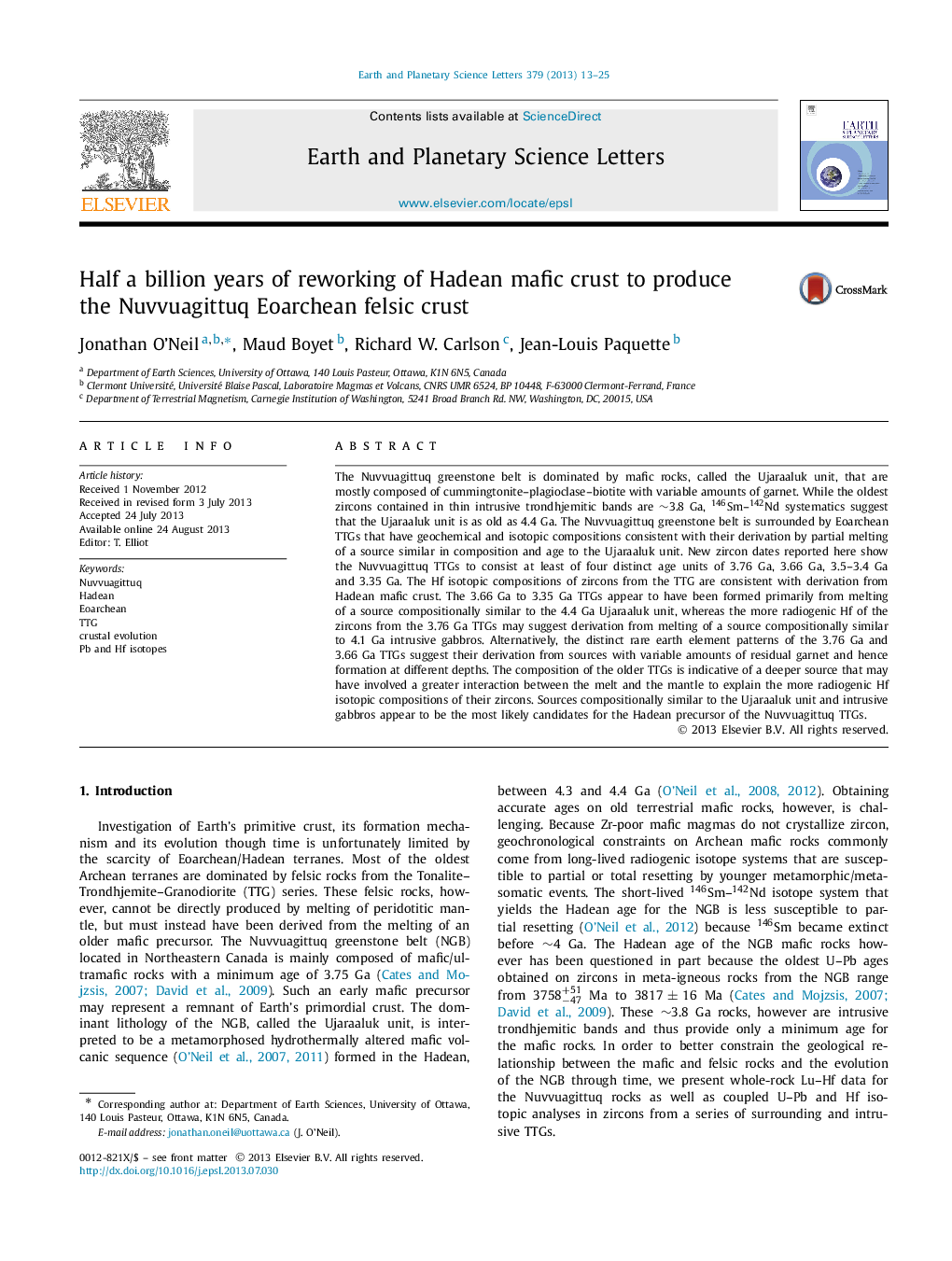| کد مقاله | کد نشریه | سال انتشار | مقاله انگلیسی | نسخه تمام متن |
|---|---|---|---|---|
| 6430056 | 1634777 | 2013 | 13 صفحه PDF | دانلود رایگان |

- Evolution of the Nuvvuagittuq greenstone belt (NGB) (Canada) felsic crust.
- U-Pb geochronology of the NGB TTGs including multiple episodes of crustal formation.
- Pb-Hf isotopic analyses on zircons and whole-rock Lu-Hf analyses of the NGB rocks.
- Pb-Hf data suggesting that the NGB TTGs are derived from a 4.3-4.4 Ga mafic crust.
- The NGB TTGs have recorded over half a billion years of early crust formation.
The Nuvvuagittuq greenstone belt is dominated by mafic rocks, called the Ujaraaluk unit, that are mostly composed of cummingtonite-plagioclase-biotite with variable amounts of garnet. While the oldest zircons contained in thin intrusive trondhjemitic bands are â¼3.8 Ga, 146Sm-142Nd systematics suggest that the Ujaraaluk unit is as old as 4.4 Ga. The Nuvvuagittuq greenstone belt is surrounded by Eoarchean TTGs that have geochemical and isotopic compositions consistent with their derivation by partial melting of a source similar in composition and age to the Ujaraaluk unit. New zircon dates reported here show the Nuvvuagittuq TTGs to consist at least of four distinct age units of 3.76 Ga, 3.66 Ga, 3.5-3.4 Ga and 3.35 Ga. The Hf isotopic compositions of zircons from the TTG are consistent with derivation from Hadean mafic crust. The 3.66 Ga to 3.35 Ga TTGs appear to have been formed primarily from melting of a source compositionally similar to the 4.4 Ga Ujaraaluk unit, whereas the more radiogenic Hf of the zircons from the 3.76 Ga TTGs may suggest derivation from melting of a source compositionally similar to 4.1 Ga intrusive gabbros. Alternatively, the distinct rare earth element patterns of the 3.76 Ga and 3.66 Ga TTGs suggest their derivation from sources with variable amounts of residual garnet and hence formation at different depths. The composition of the older TTGs is indicative of a deeper source that may have involved a greater interaction between the melt and the mantle to explain the more radiogenic Hf isotopic compositions of their zircons. Sources compositionally similar to the Ujaraaluk unit and intrusive gabbros appear to be the most likely candidates for the Hadean precursor of the Nuvvuagittuq TTGs.
Journal: Earth and Planetary Science Letters - Volume 379, 1 October 2013, Pages 13-25